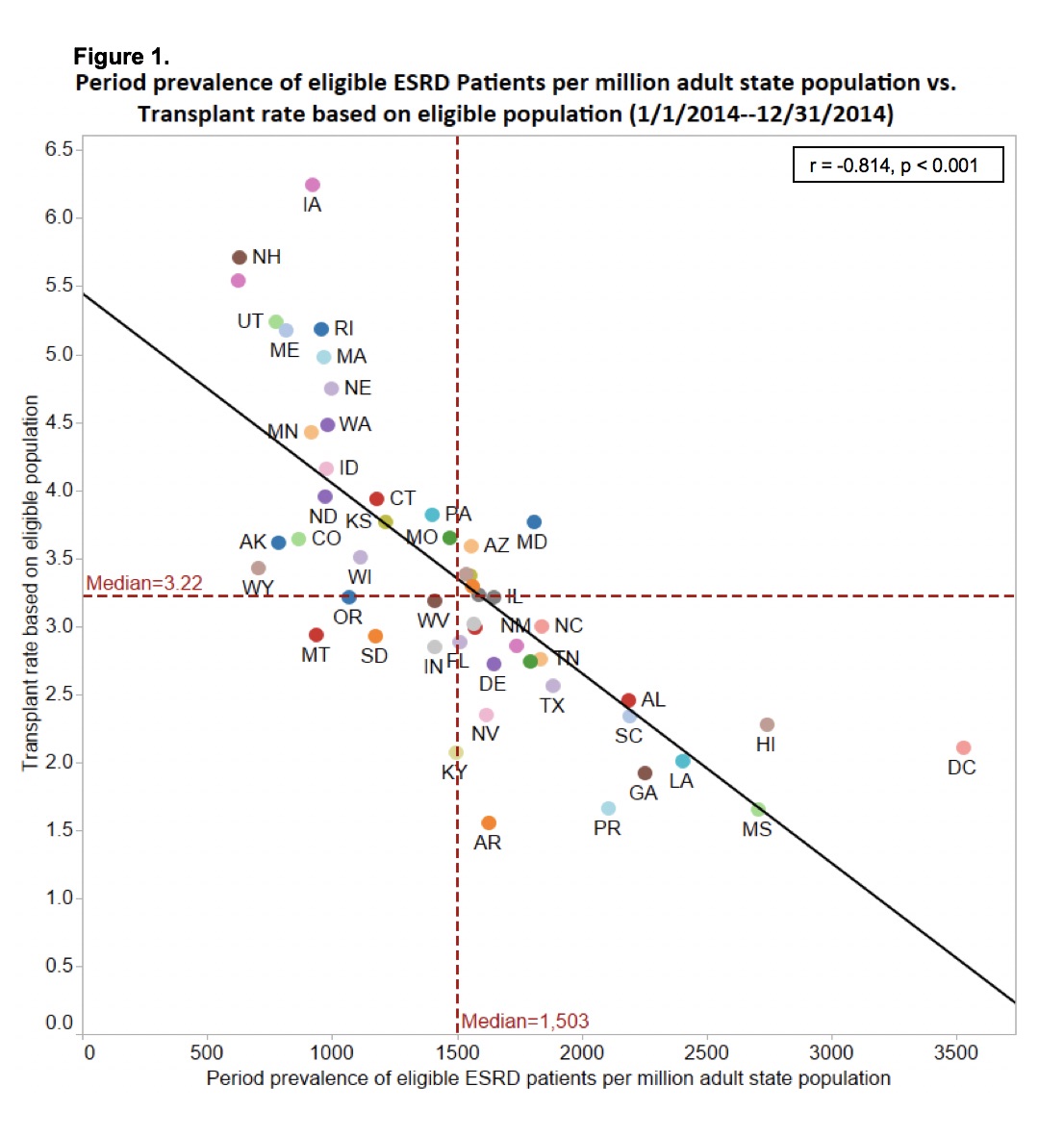Higher State-Level Demand for Renal Transplantation is Associated with Lower Deceased Donor Kidney Transplantation Rate
University of Alabama at Birmingham Hospital, Birmingham, AL
Meeting: 2020 American Transplant Congress
Abstract number: B-015
Keywords: Allocation, Kidney, Renal failure, Resource utilization
Session Information
Session Name: Poster Session B: Kidney Deceased Donor Allocation
Session Type: Poster Session
Date: Saturday, May 30, 2020
Session Time: 3:15pm-4:00pm
 Presentation Time: 3:30pm-4:00pm
Presentation Time: 3:30pm-4:00pm
Location: Virtual
*Purpose: Geographic disparities in deceased donor kidney transplantation (DDKT) persist despite increased allocation system oversight and complexity. The association between poor population health and fewer kidney donors likely exacerbates inequity in transplant supply created by current allocation practices. Here we re-examine the DDKT supply/demand relationship on a state level. We hypothesized that recent transplant rates did not equitably meet the demands of states with high end stage renal disease (ESRD) burdens.
*Methods: This retrospective study utilized the U.S. Renal Data System to estimate the 2014 period prevalence of adult, transplant-eligible ESRD patients, according to our institution’s standard eligibility criteria. Period prevalence per million adult state population was calculated. Transplant rate was defined as number of adult DDKTs in 2014 per 100 eligible ESRD population. Spearman’s rho correlation was used to evaluate ranked, state-level period prevalence of eligible ESRD patients and transplant rate.
*Results: 364,358 transplant-eligible ESRD patients were included. Period prevalence of transplant-eligible ESRD patients ranged from 3,528 patients per million (PMP) in Washington, D.C., to 627 PMP in Vermont (mean=1,477, SD=592). Transplant rates ranged from 6.24 in Iowa to 1.55 in Arkansas (mean=3.38, SD=1.10). The ranked, state-level period prevalence of eligible ESRD PMP was strongly, negatively correlated with ranked, state transplant rate (Figure 1; r= -0.814, p<0.001).
*Conclusions: Higher demand for kidney transplantation is associated with lower supply of DDKT, suggesting that current geographic inequities will not improve and may intensify. A national allocation system could alleviate geographic disparities and maintain an equitable supply/demand ratio throughout the country.
To cite this abstract in AMA style:
Kale AC, Qu H, MacLennan P, Reed R, Anderson D, Mustian MN, Orandi B, Shelton B, Kumar V, Hanaway MJ, Locke JE. Higher State-Level Demand for Renal Transplantation is Associated with Lower Deceased Donor Kidney Transplantation Rate [abstract]. Am J Transplant. 2020; 20 (suppl 3). https://atcmeetingabstracts.com/abstract/higher-state-level-demand-for-renal-transplantation-is-associated-with-lower-deceased-donor-kidney-transplantation-rate/. Accessed December 14, 2025.« Back to 2020 American Transplant Congress

